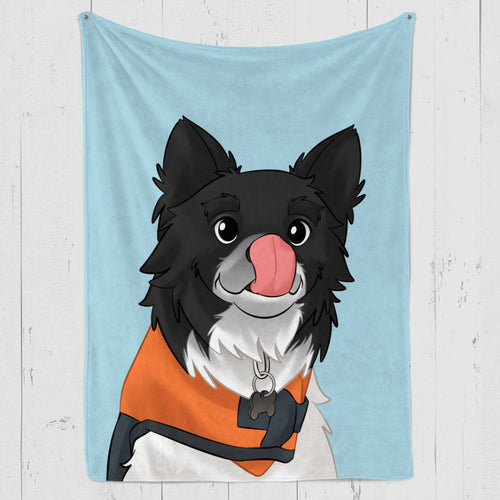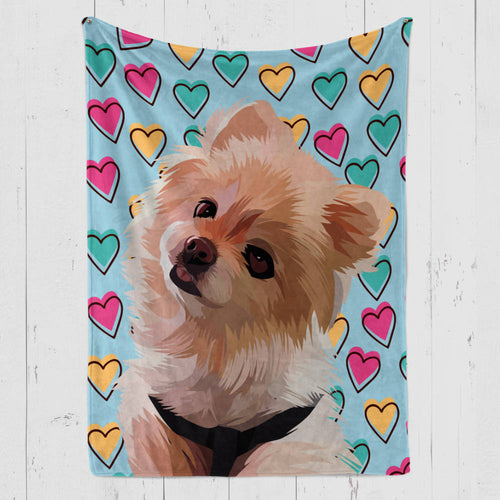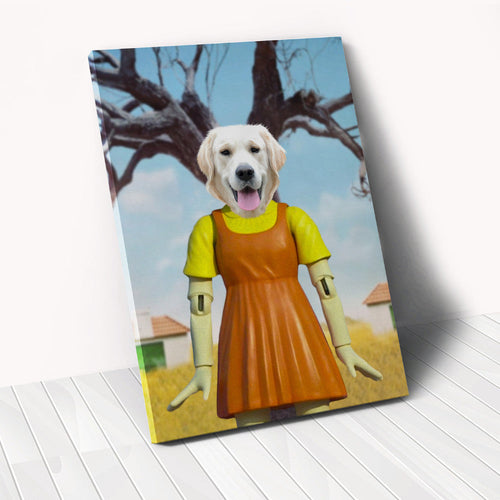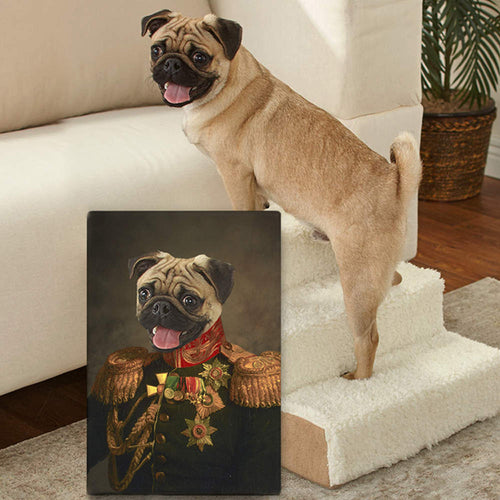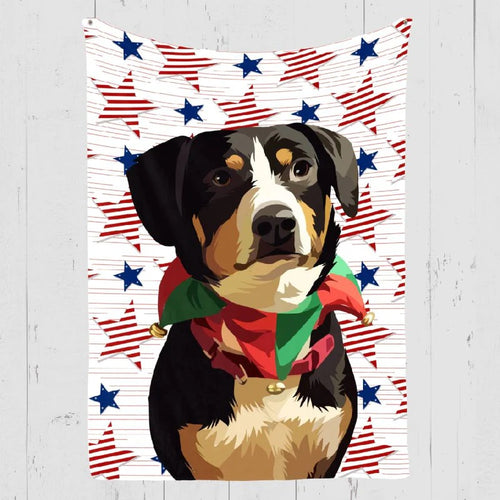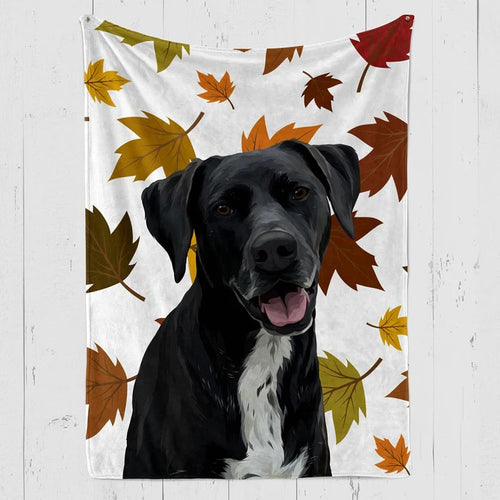
Clicker Training: A Fun and Effective Way to Teach Your Dog
Clicker training, also known as mark and reward training, is a method of teaching dogs through positive reinforcement. It involves using a handheld device called a clicker that makes a distinct sound. The clicker is used with treats to help dogs learn which behavior is desirable. Once the dog understands that the clicker means they did something right, the clicker becomes a motivator for the dog to repeat that behavior. This method helps dogs learn which behavior is good and encourages them to do it again.

Clicker training can be a valuable tool for dog owners who want to communicate effectively with their dogs during training sessions. It allows for precise timing and can help the dog learn more quickly and efficiently. By using a clicker, you can communicate with your dog in a clear and consistent way, which can help foster a stronger bond between you and your furry companion.
Demonstration of the Click: Understanding its Significance in Training
The clicker is a helpful tool for training your dog. Training with a clicker helps you pinpoint the exact moment when your dog does something right. The sound it makes is unique and only used for training. You can also use other sounds or signals to mark the right moment, such as snapping your fingers, blowing a whistle, clucking your tongue, or saying "Yes'' or "Good". If your dog is deaf, you can use a light or gentle tap on the shoulder instead. It's important to remember that the sound of the clicker only becomes meaningful when it's followed by a reward. Most dogs love treats, but rewards can be anything your dog values, like playing tug-of-war. Timing and consistency are key. You need to mark the right moment with the sound and always follow it with a reward. To train your dog like a pro, keep it simple and straightforward. Use short sentences and everyday language. The most important information should come first, and sentences should be easy to follow. This way, you and your dog can have a successful training session.

How Operant Conditioning Transforms Actions :
Operant conditioning refers to a type of learning in which animals, including dogs, modify their behavior based on the consequences of their actions. During clicker training a dog, this principle is used to train dogs and other animals by shaping and reinforcing specific behaviors through positive reinforcement. The process involves the use of a clicker, which produces a distinct sound when pressed, and treats or rewards to reinforce desired behavior.
Through operant conditioning, dogs learn to associate the sound of the clicker with a positive outcome, such as a treat or praise from their owner. This encourages them to repeat the behavior that led to the reward in the first place. Over time, the behavior becomes more ingrained, and the dog continues to exhibit the desired behavior even without the clicker or reward. Overall, operant conditioning is an essential concept in clicker training and animal behavior and training as it allows trainers to teach dogs and other animals complex behaviors through positive reinforcement and shaping.

How to Optimize Training with Clicker Techniques:
When you start training your dog, it's imperative to use treats along with the clicker sound to communicate with your furry friend. Do not show the treat to grab its attention, instead, use the hand holding the clicker. Move your hand above your dog's head until it sits down. Once it does, click the clicker, give praise, and then offer the desired treat. As time goes by, reduce the frequency of treats and use the clicker as the primary reward. It's crucial to use the clicker as your primary means of communication and provide occasional treats. You can communicate many things with the click training, such as the exact posture you desire, how long to hold the position, and specific markers. Remember, using the clicker correctly will help you train your dog more effectively and achieve the desired results.
Are you looking for a helpful guide on how to use clickers for your dog's training sessions? Look no further! Below is a step-by-step guide that will help you get started.
- Introduction to Clicker: Start by creating a positive association between the sound of the clicker and positive experiences. When Clicker training a dog, click the clicker and then reward your dog with a treat several times to help them understand that the sound means something good is coming.
- Choosing a Quiet Environment: Begin your training in a quiet, distraction-free environment to help your dog focus on the training session.
- Defining the Target Behavior: Identify the specific behavior that you want to reinforce. Break down complex behaviors into smaller achievable steps so that your dog can easily understand what is expected of them.
- Click at the perfect Moment: Timing is crucial! Click the clicker the instant your dog displays the desired behavior. This will help your dog understand what they are being rewarded for, and they will be more likely to repeat the behavior in the future.
- Follow with a Reward: After clicking, immediately offer a treat or verbal praise to reinforce the positive association with the click sound.
- Trying to be Consistent: Consistency is key! Use the clicker consistently for all training sessions. This helps your dog quickly grasp the connection between the click sound and the rewarded behavior.
- Gradually Phasing Out Treats: Over time, start phasing out treats and rely more on verbal praise or other forms of positive reinforcement to maintain the behavior.
- Generalizing the Behavior: Finally, practice the learned behavior in different environments and situations to ensure that your dog understands the behavior in various contexts.
How to Teach Your Dog Fundamental Clicker Commands :
When it comes to clicker training your dog, it's absolutely essential to ensure that your dog understands a command before it becomes an expectation. Reward good behavior consistently, but avoid disciplining your dog for bad behavior until you are certain that they understand your expectations. Don't make the mistake of assuming that your dog knows how to perform a command before adding annoyance for noncompliance. Instead, take the time to verify their understanding. Remember, clicker training is a powerful tool that can be used to teach various obedience commands, such as :
-
Sit :
Picture this, you gently raise the clicker over your furry friend's head, eagerly anticipating the moment they sit down. Once they do, click the clicker and shower them with praise and clicks as long as they remain seated. Then comes the release command, signaling that they can get up and receive their well-deserved treat. This routine isn't just about obedience - it's about teaching your dog patience, discipline, and composure.
-
Down :
When teaching your furry friend to obey, a gentle and calming approach can help build trust and understanding between you. Begin by guiding your pup towards the ground with a soft hand motion, encouraging it to lie down comfortably. Use a clicking sound to show your pleasure with its obedience and offer a treat as a reward. Keep clicking and praising your pet to reinforce the behavior. Finally, give your dog a verbal cue to signal the end of the exercise. By using this simple ritual, you can create a deeper bond with your four-legged friend based on mutual respect and trust.
-
Stay :
Teaching your furry companion to stay still can be a peaceful and rewarding experience. Begin with small goals, rewarding your pet with a click for each second of stillness. Gradually increase the duration of the poised stance and challenge your pet to hold still for longer periods. The ultimate goal is to reach five minutes of stillness, strengthening the bond of trust and respect between you and your pet. Remember that you're not just teaching your dog to stay still, but also instilling discipline and building a stronger connection with your pet. Keep the language simple and direct, and use active voice to make the text easy to understand.
-
Come :
You begin a playful game with your furry companion, who is on a leash. By calling and nudging your dog in the right direction, you guide it towards you. As your dog approaches, you use a clicker to celebrate its progress. When your dog arrives, you reward it with praise and a treat. Over time, with practice and patience, you no longer need the leash and instead enjoy a strong bond of love and companionship with your pet.
Hands-On Training: Using Hand Signals to Boost Your Dog's Obedience
Are you looking for an effortless way to communicate with your dog? Consider introducing hand signals into your training routine. By offering a visual cue before the spoken command, you create a seamless fusion of signals and language that can foster a deep bond built on mutual trust and shared experiences. Reward your dog's graceful response with the same exuberance you would for verbal commands, cementing the connection between hand movements and positive actions. With patience and consistency, your diligent pupil will effortlessly mirror your hand signals as faithfully as it does your spoken prompts.
Hand signals can be especially useful in your daily life, allowing you to direct your dog without a spoken word, even amidst bustling conversations or moments of quiet contemplation. Picture this scenario: a friendly visitor at the door, a package awaiting your signature. With a simple gesture, you instruct your companion to stay, granting you the peace of mind to tend to the task at hand. In this intricate language of gestures and understanding, you're not just training your dog; you're fostering a deep bond built on mutual trust and shared experiences, one meaningful gesture at a time.

Exploring the Upsides and Downsides of Clicker Training Methods :
At first let's discuss about the pros of clicker training for dogs :
- Clicker Training is Easy, Effective, and Inclusive. With a clicker, treats, and patience, teach new behaviors easily. Click, reward, and let the clicker be your clear cue.
- Strengthening Your Bond with Your dog. Rewarding good behavior, building trust, and cherishing quality time.
- Speedy Training for Large Breeds. Dog clicker training marks right, fosters trust, and prevents mishaps, saving time and peace.
Talking about the cons of clicker training for dogs :
- Custom Training for Canine Personalities. Clicker not universal; consider fears, motivations, and preferences.
- During Clicker Training Watch for Over Excitement and be cautious of overreliance on the clicker. Phase it out gradually for well-rounded training.
- At last, Consistency Counts in Clicker Training. Maintaining consistency to avoid confusion and frustration,will reinforce good behavior reliably.

Conclusion:
Clicker training can establish a bond with your furry friend by using positive reinforcement, patience, and clear communication. However, every dog is unique and requires a tailored approach. Embrace the clicker as a tool for positive transformation, and embark on a journey of mutual learning and growth with your loyal four-legged companion.
Frequently Asked Questions
What can lead to the introduction of someone's dog into Clicker training
Start by clicking the device and offering a treat to familiarize your dog with the clicker. Choose a quiet space and begin with simple commands. After your dog performs the desired action, a clicker for dog followed by a treat and verbal praise would be amaizing.
How do we maintain Consistency in Training sessions?
Be consistent while clicker training your dog. Click at the precise moment, with a consistent sound. Use the same type of treat and maintain consistent timing. One can create a unique time schedule to follow and abide by it which could be beneficial in the long run.
Reference Links :
Latest Review on Woof Blankets
To have such a masterpiece by my side every day is a gift for me and my memories with Rex. Thank you WoofBlankets for such an opportunity to recreate his image on a blanket.Lara o’ Miguel US, California

COLLECTION WORTH EVERY PENNY
BEST SELLERS
-
Woofy Single Color Custom Pet Blanket
![Woofy Single Custom Pet Blanket – Woof Blanket]()
- -41%
BlanketsSHOP NOW- Regular price
- from $64.95
- Sale price
- from $64.95
- Regular price
-
$109.95 - Unit price
- per
Sold out -
Exclusive Christmas Custom Pet Blanket
![Exclusive Custom Pet Blanket]()
- -39%
BlanketsSHOP NOW- Regular price
- from $69.95
- Sale price
- from $69.95
- Regular price
-
$114.95 - Unit price
- per
Sold out -
Christmas Custom Pet Blanket
![Christmas Custom Pet Blanket - Custom Dog Blankets]()
- -40%
BlanketsSHOP NOW- Regular price
- from $69.95
- Sale price
- from $69.95
- Regular price
-
$115.95 - Unit price
- per
Sold out -
Watercolor Pet Portraits
![]() SHOP NOW
SHOP NOW- Regular price
- from $59.95
- Sale price
- from $59.95
- Regular price
-
- Unit price
- per
Sold out -
Woofy Christmas Custom Dog Blanket
![Woofy Christmas Custom Dog Blanket]()
- -39%
BlanketsSHOP NOW- Regular price
- from $69.95
- Sale price
- from $69.95
- Regular price
-
$114.95 - Unit price
- per
Sold out -
Modern Pet Owner Portrait
![]()
- -32%
CanvasSHOP NOW- Regular price
- from $84.95
- Sale price
- from $84.95
- Regular price
-
$124.95 - Unit price
- per
Sold out -
Woof Splash Custom Pet Blanket
![Woof Splash Custom Pet Blanket]()
- -39%
BlanketsSHOP NOW- Regular price
- from $69.95
- Sale price
- from $69.95
- Regular price
-
$114.95 - Unit price
- per
Sold out -
The Admiral - Custom Pet Portrait
![The Admiral - Custom Pet Portrait Online]()
- NEW
- -25%
CanvasSHOP NOW- Regular price
- from $59.95
- Sale price
- from $59.95
- Regular price
-
$79.95 - Unit price
- per
Sold out -
Wings of Loyalty - Custom Pet Portrait
![]()
- NEW
CanvasSHOP NOW- Regular price
- from $59.95
- Sale price
- from $59.95
- Regular price
-
- Unit price
- per
Sold out -
Pet Memorial Custom Photo Collage Blanket
![Personalized pet memorial quilt with photos]()
- -41%
BlanketsSHOP NOW- Regular price
- from $64.95
- Sale price
- from $64.95
- Regular price
-
$109.95 - Unit price
- per
Sold out -
Celestial Paws - Custom Pet Portrait
![]() CanvasSHOP NOW
CanvasSHOP NOW- Regular price
- from $59.95
- Sale price
- from $59.95
- Regular price
-
- Unit price
- per
Sold out -
The Loyal Soul - Custom Pet Portrait
![]()
- NEW
SHOP NOW- Regular price
- from $59.95
- Sale price
- from $59.95
- Regular price
-
- Unit price
- per
Sold out -
Cartoonized Pet Portraits (New)
![Cartoonized Pet Custom Portraits Online]()
- -36%
SHOP NOW- Regular price
- from $59.95
- Sale price
- from $59.95
- Regular price
-
$93.95 - Unit price
- per
Sold out -
The French Sailor - Custom Pet Portrait
![]()
- -25%
CanvasSHOP NOW- Regular price
- from $59.95
- Sale price
- from $59.95
- Regular price
-
$79.95 - Unit price
- per
Sold out -
The Policeman - Custom Pet Portrait
![]()
- NEW
- -25%
CanvasSHOP NOW- Regular price
- from $59.95
- Sale price
- from $59.95
- Regular price
-
$79.95 - Unit price
- per
Sold out -
The General - Custom Pet Portrait
![]()
- NEW
- -25%
CanvasSHOP NOW- Regular price
- from $59.95
- Sale price
- from $59.95
- Regular price
-
$79.95 - Unit price
- per
Sold out -
Woof Love Custom Pet Blanket
![Woof Love Custom Pet Blanket]()
- -39%
BlanketsSHOP NOW- Regular price
- from $69.95
- Sale price
- from $69.95
- Regular price
-
$114.95 - Unit price
- per
Sold out -
Summer Time Custom Pet Blanket
![Summer Time Custom Pet Blanket]()
- -39%
BlanketsSHOP NOW- Regular price
- from $69.95
- Sale price
- from $69.95
- Regular price
-
$114.95 - Unit price
- per
Sold out -
The Ambassador - Custom Pet Portrait
![The Ambassador - Custom Pet Portrait Online]()
- NEW
- -25%
CanvasSHOP NOW- Regular price
- from $59.95
- Sale price
- from $59.95
- Regular price
-
$79.95 - Unit price
- per
Sold out -
Fall In Love Custom Pet Blanket
![Fall In Love Custom Dog Blanket]()
- NEW
- -39%
BlanketsSHOP NOW- Regular price
- from $69.95
- Sale price
- from $69.95
- Regular price
-
$114.95 - Unit price
- per
Sold out -
The Classy Lady - Custom Pet Portrait
![The Classy Lady]()
- NEW
- -25%
CanvasSHOP NOW- Regular price
- from $59.95
- Sale price
- from $59.95
- Regular price
-
$79.95 - Unit price
- per
Sold out -
The Duke - Custom Pet Portrait
![The Duke - Custom Pet Portrait]()
- NEW
- -25%
CanvasSHOP NOW- Regular price
- from $59.95
- Sale price
- from $59.95
- Regular price
-
$79.95 - Unit price
- per
Sold out -
Dog In Suit- Custom Pet Portrait
![Dash Dog In Suit- Custom Pet Portrait Online]()
- NEW
- -25%
CanvasSHOP NOW- Regular price
- from $59.95
- Sale price
- from $59.95
- Regular price
-
$79.95 - Unit price
- per
Sold out -
The Princess - Custom Pet Portrait
![]()
- NEW
- -25%
CanvasSHOP NOW- Regular price
- from $59.95
- Sale price
- from $59.95
- Regular price
-
$79.95 - Unit price
- per
Sold out -
Modern Pet Portrait with One Mug
![Modern Pet Portrait with One Mug]()
- -25%
Print MaterialSHOP NOW- Regular price
- from $99.95
- Sale price
- from $99.95
- Regular price
-
$133.95 - Unit price
- per
Sold out -
The Aristocrat - Custom Pet Portrait
![The Aristocrat - Custom Pet Portrait At Best Price]()
- NEW
- -25%
CanvasSHOP NOW- Regular price
- from $59.95
- Sale price
- from $59.95
- Regular price
-
$79.95 - Unit price
- per
Sold out -
Single Color Custom Blanket with 1 Mug
![Single Color Custom Blanket with 1 Mug]() BlanketsSHOP NOW
BlanketsSHOP NOW- Regular price
- from $99.95
- Sale price
- from $99.95
- Regular price
-
- Unit price
- per
Sold out -
Single Color Custom Blanket with 2 Pillows
![Single Color Custom Pet Blanket with 2 Pillows]()
- -21%
BlanketsSHOP NOW- Regular price
- from $99.95
- Sale price
- from $99.95
- Regular price
-
$125.95 - Unit price
- per
Sold out -
The Dog in Suit Custom Pet Mug
![]()
- -20%
MugsSHOP NOW- Regular price
- $39.95
- Sale price
- $39.95
- Regular price
-
$49.95 - Unit price
- per
Sold out -
Angel Custom Pet Mug
![]()
- -20%
MugsSHOP NOW- Regular price
- $39.95
- Sale price
- $39.95
- Regular price
-
$49.95 - Unit price
- per
Sold out -
This Human Belongs To - Custom Pet Mug
![]()
- NEW
- -20%
MugsSHOP NOW- Regular price
- $39.95
- Sale price
- $39.95
- Regular price
-
$49.95 - Unit price
- per
Sold out -
It's Not Dog Hair Custom Pet Mug
![]()
- NEW
- -20%
MugsSHOP NOW- Regular price
- $39.95
- Sale price
- $39.95
- Regular price
-
$49.95 - Unit price
- per
Sold out -
My Dog Is My Valentine Custom Pet Mug
![]()
- NEW
- -20%
MugsSHOP NOW- Regular price
- $39.95
- Sale price
- $39.95
- Regular price
-
$49.95 - Unit price
- per
Sold out -
3 Photos With Message Custom Pet Mug
![]()
- NEW
- -20%
MugsSHOP NOW- Regular price
- $39.95
- Sale price
- $39.95
- Regular price
-
$49.95 - Unit price
- per
Sold out -
My Valentine Has Four Legs- Personalized Mugs
![]()
- NEW
- -20%
MugsSHOP NOW- Regular price
- $39.95
- Sale price
- $39.95
- Regular price
-
$49.95 - Unit price
- per
Sold out -
Dog Mamma Custom Pet Coffee Mug
![]()
- -20%
MugsSHOP NOW- Regular price
- $39.95
- Sale price
- $39.95
- Regular price
-
$49.95 - Unit price
- per
Sold out -
Uncle Sam - Custom Pet Portrait
![]()
- NEW
- -25%
CanvasSHOP NOW- Regular price
- from $59.95
- Sale price
- from $59.95
- Regular price
-
$79.95 - Unit price
- per
Sold out -
The Revolutionary Emperor - Custom Pet Portrait
![]()
- NEW
- -25%
CanvasSHOP NOW- Regular price
- from $59.95
- Sale price
- from $59.95
- Regular price
-
$79.95 - Unit price
- per
Sold out -
The Princess Paws - Custom Pet Portrait
![]()
- -25%
CanvasSHOP NOW- Regular price
- from $59.95
- Sale price
- from $59.95
- Regular price
-
$79.95 - Unit price
- per
Sold out -
The Dark Crusader Knight - Custom Pet Portrait
![]()
- -25%
CanvasSHOP NOW- Regular price
- from $59.95
- Sale price
- from $59.95
- Regular price
-
$79.95 - Unit price
- per
Sold out



